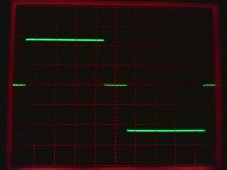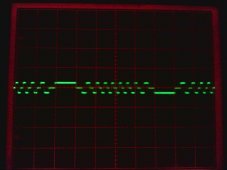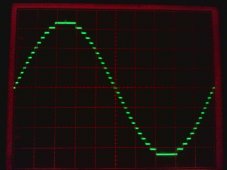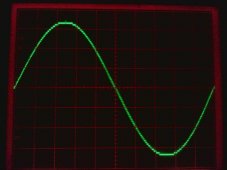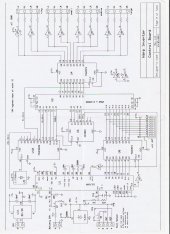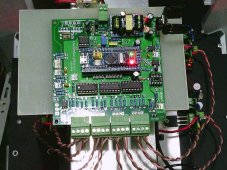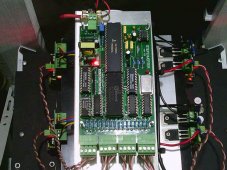Warpspeed
Solar Wizard
The thirty brand new Winston 60 amp hour cells when they arrived were all within +/- one millivolt , except one cell that was down about 3mV. That cell later failed dead short after about a year in operation. So there must have been something wrong with it right from the beginning.
You will find that in the central flat part of the voltage curve, the cell to cell voltages are always fairly close, its at the ends where the voltages diverge in a really dramatic way.
The voltage measurement span is 500mV (3.1 to 3.6v) with 256 bit resolution, so its almost 2mV per bit, but its noise free without any further averaging or processing. Rock steady bars on the screen with the inverter running under load. I am sure nine bit resolution would be possible, but its inconvenient with regards to chip count in a hardware only design, and not really necessary.
If this is to feed into a microcontroller, its definitely stable and noise free enough to do better than eight bits of frequency count resolution.
The most important feature of all this is that its excellent for measuring very small cell to cell voltage differences, rather than having very high absolute voltage measurement accuracy. Same with the cell balancer. Its all rather crude, but self adjusts to have extreme cell to cell voltage sensitivity for balancing purposes.
Earlier on, I had thirty separate voltage sensing circuits, with thirty potentiometers, and thirty discharge resistors. It was hopeless trying to make all of them stay in adjustment. Every single one needs very high ABSOLUTE voltage stability, or they drift all over the place. You will go crazy trying to get it right, and it becomes a cell unbalancer if its not right.
Very glad to get rid of that.
In fact the photograph in an earlier post shows these nightmare cell balancing boards with those evil blue potentiometers.
So Guys, the hot tip is that both voltage measurement and cell balancing should be done by the same circuit located in the central BMS, and used for every cell, rather than trying to do anything individually at each cell. That was a very important lesson that I have learned the hard way.
If something drifts a bit over time in the central BMS, it really does not matter all that much, as every cell still gets the same identical treatment.
Right through all this, I have used 27 ohm one watt resistors as cell discharge loads (125mA). Its not a lot of current but has proved quite adequate for 60Ah cells. But cell discharge loads and balancing needs to be a continuous ongoing process, and the lower the current, the less it will influence cell voltage measurement as it switches in and out.
Yesterday I tried to photograph the schematic of the isolated section with my faulty camera, and it turned out horrible. That was really dumb.
I should have scanned it instead, so here is attempt two.
I definitely have an original electronic copy here, and will try to locate that.
You will find that in the central flat part of the voltage curve, the cell to cell voltages are always fairly close, its at the ends where the voltages diverge in a really dramatic way.
The voltage measurement span is 500mV (3.1 to 3.6v) with 256 bit resolution, so its almost 2mV per bit, but its noise free without any further averaging or processing. Rock steady bars on the screen with the inverter running under load. I am sure nine bit resolution would be possible, but its inconvenient with regards to chip count in a hardware only design, and not really necessary.
If this is to feed into a microcontroller, its definitely stable and noise free enough to do better than eight bits of frequency count resolution.
The most important feature of all this is that its excellent for measuring very small cell to cell voltage differences, rather than having very high absolute voltage measurement accuracy. Same with the cell balancer. Its all rather crude, but self adjusts to have extreme cell to cell voltage sensitivity for balancing purposes.
Earlier on, I had thirty separate voltage sensing circuits, with thirty potentiometers, and thirty discharge resistors. It was hopeless trying to make all of them stay in adjustment. Every single one needs very high ABSOLUTE voltage stability, or they drift all over the place. You will go crazy trying to get it right, and it becomes a cell unbalancer if its not right.
Very glad to get rid of that.
In fact the photograph in an earlier post shows these nightmare cell balancing boards with those evil blue potentiometers.
So Guys, the hot tip is that both voltage measurement and cell balancing should be done by the same circuit located in the central BMS, and used for every cell, rather than trying to do anything individually at each cell. That was a very important lesson that I have learned the hard way.
If something drifts a bit over time in the central BMS, it really does not matter all that much, as every cell still gets the same identical treatment.
Right through all this, I have used 27 ohm one watt resistors as cell discharge loads (125mA). Its not a lot of current but has proved quite adequate for 60Ah cells. But cell discharge loads and balancing needs to be a continuous ongoing process, and the lower the current, the less it will influence cell voltage measurement as it switches in and out.
Yesterday I tried to photograph the schematic of the isolated section with my faulty camera, and it turned out horrible. That was really dumb.
I should have scanned it instead, so here is attempt two.
I definitely have an original electronic copy here, and will try to locate that.
Attachments
Last edited:





